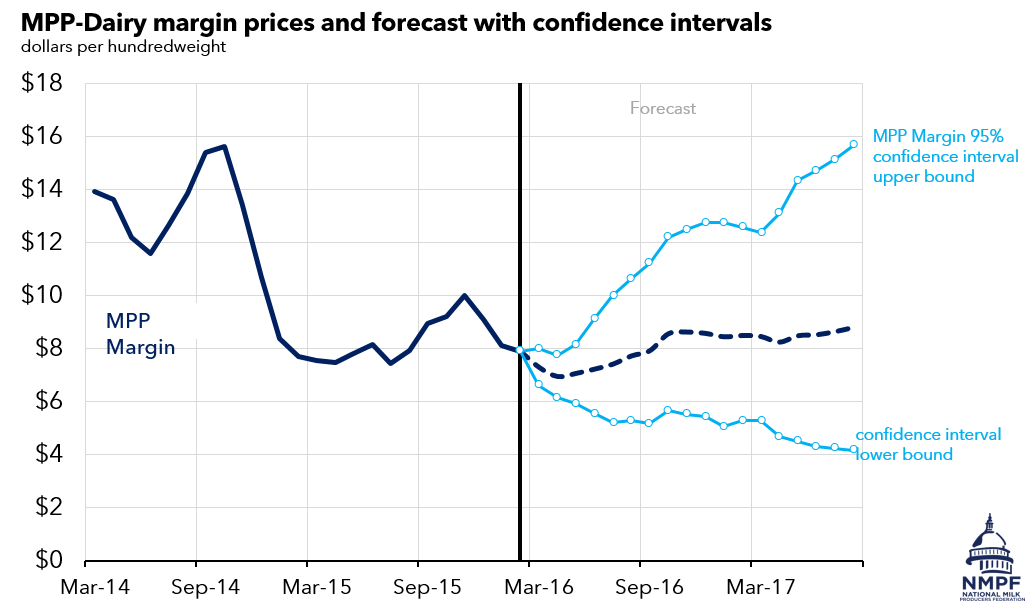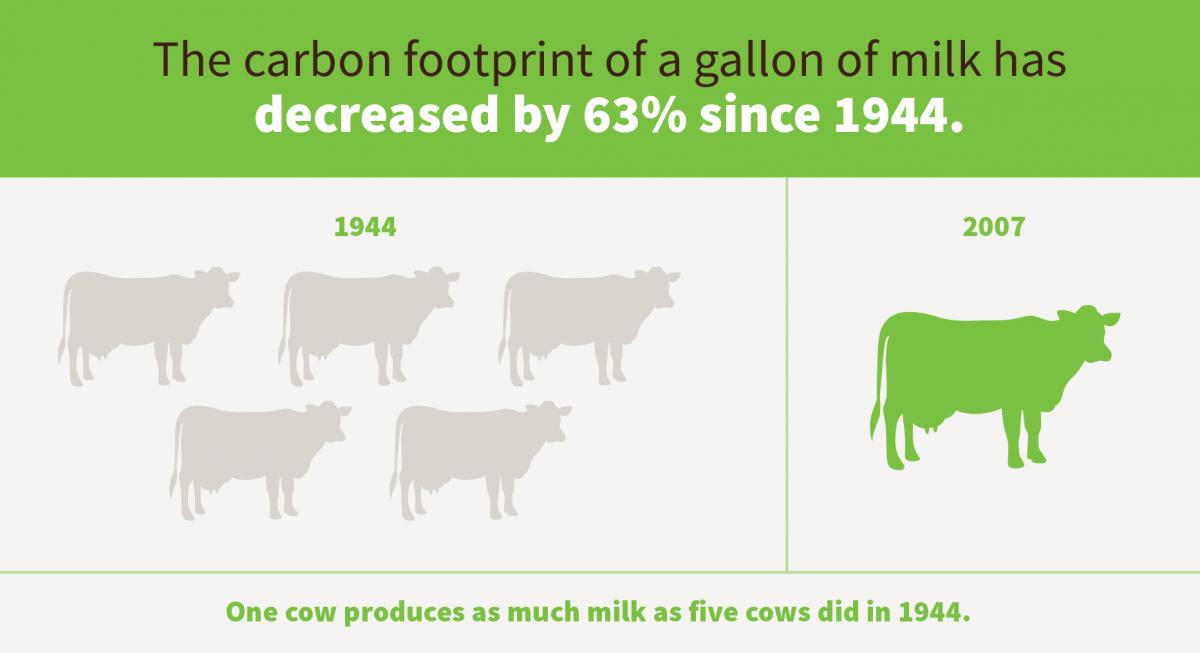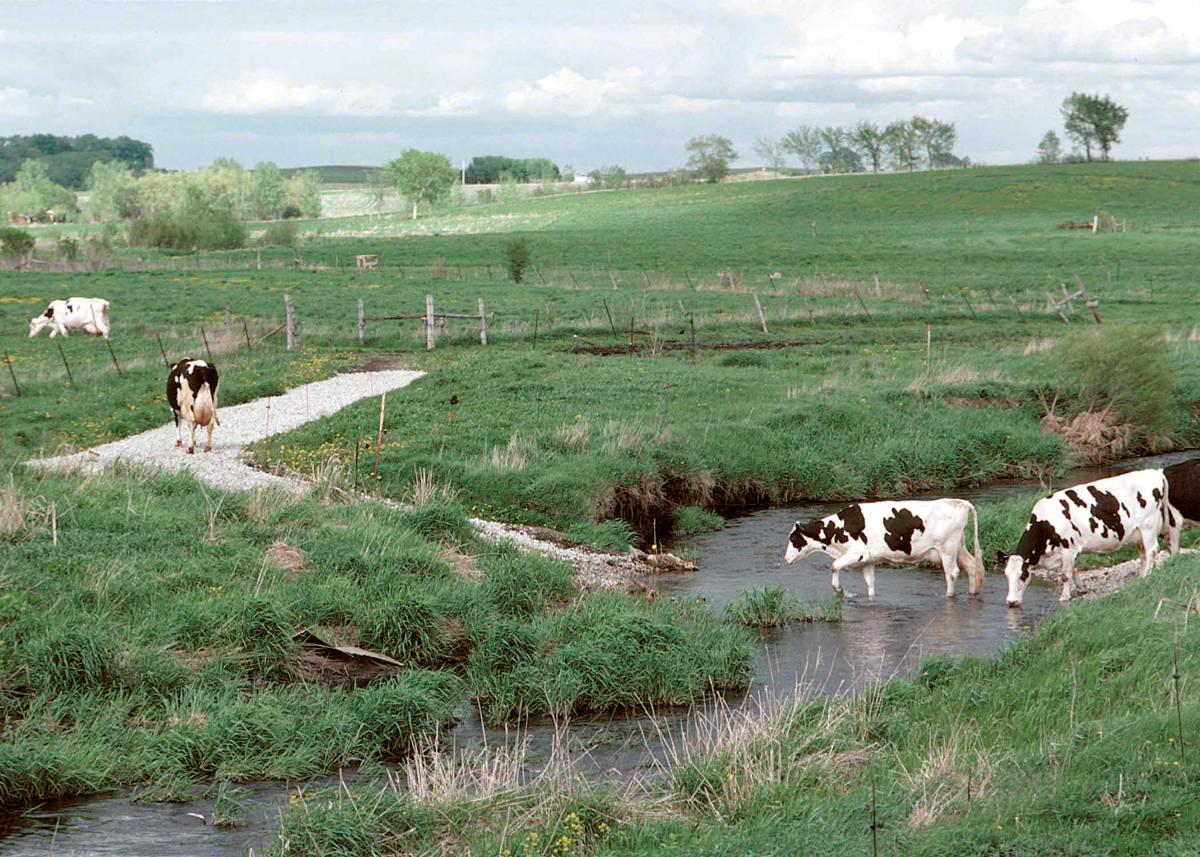NMPF Backs Senate, House Bills Calling for Enforcement of Dairy Labeling Standards
February 06, 2017 National Milk’s efforts to spur enforcement of milk labeling standards took a major leap forward last month with the introduction of companion bills in the Senate and House that would direct the Food and Drug Administration (FDA) to police the misuse of dairy-specific terms.
National Milk’s efforts to spur enforcement of milk labeling standards took a major leap forward last month with the introduction of companion bills in the Senate and House that would direct the Food and Drug Administration (FDA) to police the misuse of dairy-specific terms.
NMPF has pushed the FDA for many years to take action against plant-based imitators that are mislabeling their packages, and worked last month with leaders in both congressional chambers to formulate the legislation, creating new momentum in the ongoing labeling enforcement campaign.
Sen. Tammy Baldwin’s (D-WI) DAIRY PRIDE Act, introduced in mid-January, would protect the integrity of dairy standards by requiring that the FDA develop a 90-day timetable for enforcement actions against vegetable-based milk imitators made from non-dairy ingredients like almonds, rice and soy. Her bill also would require that the FDA report to Congress two years after the bill’s enactment to explain its enforcement actions.
Meanwhile, an identical, bipartisan bill was introduced on Jan. 31 in the House by Reps. Peter Welch (D-VT), Sean Duffy (R-WI), Mike Simpson (R-ID), Joe Courtney (D-CT), David Valadao (R-CA) and Suzan DelBene (D-WA). NMPF President and CEO Jim Mulhern praised the lawmakers for their work on this important issue.
“For too long, the FDA has turned a blind eye to the misbranding of imitation dairy products, despite the decades-old federal law that milk comes from animals, not vegetables or nuts,” he said. “Real milk has been recognized for decades for its important nutritional benefits. These imposter products almost always use dairy imagery, similar packaging and names – but they never match the nutritional benefits found in milk.”
Current regulations (CFR 131.110) define milk as a product of a cow. Though existing federal policy is clear on this subject, FDA has not challenged the labeling practices of imitators made out of nuts, beans, seeds and grains. NMPF has noted how the United States’ lack of enforcement efforts differs greatly from those in similar nations, which actively enforce standards of identify. While the term “almond milk” is seen on products sold in the United States, it is absent from the same brand of almond beverage sold in Canada and the United Kingdom.
NMPF Urges Senate to Confirm Agriculture Secretary Nominee Perdue; Welcomes Former Secretary to USDEC
February 06, 2017President Donald Trump has chosen former Georgia Gov. Sonny Perdue to head the U.S. Department of Agriculture (USDA), a moved hailed last month by NMPF as important to the future of American agriculture policy. NMPF has urged the Senate to swiftly confirm Perdue as Agriculture Secretary in the coming weeks, as other new members of the Trump cabinet begin their roles.
Perdue brings a strong background in farming as well as government administration to USDA. He served from 2003-2011 as the governor of Georgia, where agriculture is the state’s leading industry. Prior to that, Perdue was a state legislator and small businessman. He is also a trained veterinarian, which gives him unique insights into the issues facing America’s livestock producers in the areas of animal health, food safety and the environment, according to National Milk.
Perdue’s role as the chief advocate for farmers and rural America is crucial in this new administration, especially at a time of stress in farm milk prices, NMPF President and CEO Jim Mulhern said in backing Perdue for the position.
“Starting right away, NMPF will seek to collaborate with Secretary Perdue and his agency on ways to strengthen the safety net for dairy farmers, relieve regulatory burdens and enhance opportunities to keep and grow markets abroad for our dairy exports,” he said.
NMPF also welcomed Perdue’s predecessor at USDA, former Agriculture Secretary Tom Vilsack, to his new role as President and CEO of the U.S. Dairy Export Council (USDEC), which shares offices in Arlington with NMPF.
“We are thrilled Tom Vilsack will dedicate his talents in the coming years to expanding opportunities across the globe for America’s dairy farmers,” Mulhern said. Vilsack started Feb. 1 as head of USDEC, which works closely on trade issues with NMPF.
“Secretary Vilsack arrives at USDEC at a pivotal time, as we continue to face both challenges and opportunities to expanding U.S. dairy exports,” Mulhern said. “Secretary Vilsack’s familiarity with our trading partners provides him with a strong background to advance the programs of USDEC and its members in the future.
NMPF Urges Trump Administration to Maintain U.S. Dairy Export Opportunities
February 06, 2017 National Milk continues to reiterate to Congress and the White House the critical importance of maintaining export markets for America’s dairy farmers, even as the pivotal role of the United States in global trade began to shift last month as a result of actions by the Trump Administration.
National Milk continues to reiterate to Congress and the White House the critical importance of maintaining export markets for America’s dairy farmers, even as the pivotal role of the United States in global trade began to shift last month as a result of actions by the Trump Administration.
In one of his first official acts, President Donald Trump followed through on his campaign pledge to formally withdraw the United States from the Trans-Pacific Partnership (TPP) agreement. He also expressed his intention to reassess the terms of the North American Free Trade Agreement (NAFTA). Given the value of exports in the dairy sector – approximately $5 billion annually – and the benefits dairy farmers derive from those sales, NMPF urged Trump to continue pursuing new trade opportunities in the Pacific Rim, and to preserve the agricultural trade relationship with Mexico, which is a $1+ billion market for U.S. dairy exports – the largest for America’s dairy sector.
NMPF joined with a coalition of more than 130 other farm and food organizations calling last month on Trump to preserve hard-fought agriculture market access into Canada and Mexico that has developed during the past 20 years as a result of NAFTA.
NMPF told the Trump Administration that “although some important gaps in U.S. export access still remain, increased market access under NAFTA has been a windfall for U.S. farmers, ranchers and food processors. U.S. food and agriculture exports to both countries have more than quadrupled, growing from $8.9 billion in 1993 to $38.6 billion in 2015.” Preserving open access for U.S. dairy products into Mexico remains a top priority for NMPF and its members, according to the organization.
Meanwhile, across the Pacific, a retreat from TPP “must not lead to a retreat from economic engagement with growing Asian markets for American dairy products,” said NMPF President and CEO Jim Mulhern. “Our competitors have been successfully negotiating trade agreements in Asia over the past several years. This puts the U.S. agriculture sector at a competitive disadvantage if we don’t pursue our own initiatives.”
He said one approach the new administration could take is to replace the 12-nation TPP with bilateral agreements focused on individual countries that offer valuable agricultural market access opportunities, such as Japan, Vietnam and others in Southeast Asia.
In making a strong case for preserving dairy market access around the world, NMPF has told incoming Trump Administration officials that the U.S. dairy sector exports nearly 15 percent of its milk production annually, and in the process generates more than 120,000 jobs in dairy farming, manufacturing and related sectors. Any disruption in exports of dairy and other food products “would have devastating consequences for our farmers, and the many American processing and transportation industries and workers supported by these exports,” Mulhern said in a Jan. 6 letter to President Trump.
NMPF, U.S. Dairy Sector Pushes Back Against Canadian Dairy Protectionism
February 06, 2017 Concerns about protectionist Canadian dairy policy reached new heights last month as NMPF led an expanding coalition of companies and organizations sounding the alarm about Canada’s violations of its dairy trade commitments. At issue is the imminent national implementation of a Canadian dairy pricing program that started last year in Ontario, intended to unfairly subsidize Canadian dairy products both within and outside of Canada.
Concerns about protectionist Canadian dairy policy reached new heights last month as NMPF led an expanding coalition of companies and organizations sounding the alarm about Canada’s violations of its dairy trade commitments. At issue is the imminent national implementation of a Canadian dairy pricing program that started last year in Ontario, intended to unfairly subsidize Canadian dairy products both within and outside of Canada.
A group of 17 NMPF and U.S. Dairy Export Council (USDEC) member companies, representing dairy farmers, cooperatives and processors, asked governors in 25 states last month to put pressure on Canadian policymakers to maintain their nation’s market access to the United States. The companies said the states need to speak out in light of Canadian intentions to proceed with the enactment of a pricing program that will slash dairy protein exports from the United States, as well as allow Canada to dump its excess dairy proteins on the world market. NMPF also conveyed this message to state agriculture leaders when speaking at the National Association of State Departments of Agriculture meeting on Feb. 1.
The NMPF-led coalition told governors that trade “cannot be a one-way street, with Canada expecting to enjoy the benefits of exporting its products of interest to our market, while denying a sector accounting for hundreds of thousands of jobs in rural America reliable access to the Canadian market.” The letter was sent to governors in Arizona, California, Colorado, Idaho, Iowa, Indiana, Kansas, Maryland, Massachusetts, Michigan, Minnesota, Missouri, Montana, Nebraska, New Mexico, New York, North Dakota, Ohio, Pennsylvania, South Dakota, Texas, Vermont, Virginia, Washington and Wisconsin.
NMPF President and CEO Jim Mulhern noted that, given the current trade climate across North America, “it is foolhardy for Canada to continue provoking the United States with a course of action that so blatantly violates our trade agreements. We need our nation’s governors to join in our call for Canada to step back from the brink of what it is about to do and take steps to remind Canada how critical trade is to its own interests as well.”
NMPF is continuing to work in concert with USDEC, the International Dairy Foods Association and the National Association of State Departments of Agriculture to underscore how dysfunctional the dairy trading relationship with Canada has become and how urgently work is needed to reform that harmful dynamic.
NMPF Seeks Expanded Tariffs on European Dairy Products as Part of Beef Settlement
February 06, 2017Following the European Union’s (EU) long-standing refusal to resolve a World Trade Organization dispute impeding U.S. exports of beef to the EU, NMPF urged the U.S. Trade Representative last month to add European dairy foods to the list of items that will be subject to retaliatory tariffs.
At issue is how the United States should turn up the heat on Europe for failing to comply with its trade obligations to allow the importation of American beef. Since dairy is a major agricultural sector important to many EU member states, NMPF told the USTR last month that imposing additional retaliatory tariffs on EU cheese exports will reinforce the goal of getting the EU to comply with its commitments.
Roquefort cheese is one of the products that the USTR proposed as a target to help promote EU compliance. However, NMPF noted that the current retaliatory tariffs list is outdated, having been drawn up many years ago, and would benefit from the addition of more dairy products. NMPF recommended several cheese tariff lines that would help spur internal pressure by EU stakeholders to resolve this long-standing WTO case.
Since 1998, when the WTO determined that the EU was not complying with its WTO obligations due to unscientific bans affecting U.S. beef exports, the United States has had the WTO-sanctioned right to impose tariffs on a range of EU products amounting to $116.8 million a year. For the past several years, the United States has sought to work under a Memorandum of Understanding (MOU) with the EU to provide compensatory market access for certain types of U.S. beef exports. However, the EU’s approach to administering this MOU has not had the desired effect.
As a result, the USTR announced in late 2016 that it is reinstituting the retaliatory tariffs. NMPF wants to ensure that the EU’s reliance on exports to the United States is used strategically to have a positive impact on the EU’s compliance with its trade commitments.
MPP Margin Formula Tops $10 in Nov.-Dec. Period
February 06, 2017
USDA’s National Agricultural Statistics Service (NASS) last week reported that the December U.S. average all-milk price was $18.80 per hundredweight, up $1.20 from November. The price increase was greater than indicated by the December federal order class prices announced in early January. NASS also said that the December monthly feed cost, under the current Margin Protection Program (MPP) farm bill formula, is $7.70 per hundredweight., up 8 cents from November. The monthly MPP margin for December is $11.10 per hundredweight., $1.12 higher than November’s monthly margin. The bimonthly MPP margin for November-December is $10.54 per cwt., a rise of $1.38 per hundredweight from the previous margin for the September-October period.
USDA’s current MPP margin forecast (below), based on Jan. 30 CME futures settlements, projects the margin will remain between $10-$11 per hundredweight during all of 2017, with only a slight chance of falling below $8 per hundredweight during any period. USDA’s MPP margin forecasts are updated daily online.
NMPF’s Future for Dairy website offers a variety of educational resources to help farmers monitor the program.
NMPF Opposes Proposal to Reduce Dairy Offerings in WIC Program
February 06, 2017 NMPF pushed back against a proposal last month from the National Academies of Science (NAS) to reduce the amount of dairy foods offered through the federal assistance WIC program. In criticizing the recommendation, NMPF noted that dairy – an irreplaceable source of nutrition for Americans – is already widely under-consumed among WIC recipients.
NMPF pushed back against a proposal last month from the National Academies of Science (NAS) to reduce the amount of dairy foods offered through the federal assistance WIC program. In criticizing the recommendation, NMPF noted that dairy – an irreplaceable source of nutrition for Americans – is already widely under-consumed among WIC recipients.
Congress requested that the NAS review the WIC food offerings to provide support for aligning the WIC basket with those foods recommended by the Dietary Guidelines for Americans. NMPF noted that milk, cheese and yogurt are “the No. 1 source of nine essential nutrients in children’s diets: protein, calcium, phosphorus, magnesium, potassium, vitamins A, B12, D and riboflavin.
The reason dairy foods are included in the WIC package is that no other food source can deliver such a wide range of vital nutrients to mothers and young children. Cutting back on dairy is a step in the wrong direction,” said Jim Mulhern, President and CEO of NMPF, who noted that milk has always been central to the WIC program’s goal of providing low-income participants with foods and nutrients they typically under-consume.
The NAS report did contain some pro-dairy provisions, such as that yogurt should be easier for women obtain through the WIC program. The NAS recommendations will now be reviewed by USDA. NMPF will work with the International Dairy Foods Association to highlight the value to all Americans of dairy foods.
CWT Assists in Capturing 5.7 Million Pounds of Dairy Export Sales Contracts
February 06, 2017 Cooperatives Working Together members won 39 contracts to sell 4.42 million pounds of cheese and 1.32 million pounds of butter to customers in Asia, Central America, the Middle East, North Africa and Oceania in January 2017. The product will be shipped from January through April 2017.
Cooperatives Working Together members won 39 contracts to sell 4.42 million pounds of cheese and 1.32 million pounds of butter to customers in Asia, Central America, the Middle East, North Africa and Oceania in January 2017. The product will be shipped from January through April 2017.
These CWT-assisted transactions will move the equivalent of 70.57 million pounds of milk on a milkfat basis to customers in 10 countries on five continents. The amounts of dairy products and related milk volumes reflect current contracts for delivery, not completed export volumes. CWT will pay export assistance to the bidders only when export and delivery of the product is verified by the submission of the required documentation.
Assisting CWT member cooperatives gain and maintain world market share through the Export Assistance program in the long-term expands the demand for U.S. dairy products and the U.S. farm milk that produces them. This, in turn, positively impacts all U.S. dairy farmers by strengthening and maintaining the value of dairy products that directly impact their milk price.
All cooperatives and dairy farmers are encouraged to add their support to this important program. Membership forms are available on the CWT website.
FARM Environmental Stewardship Releases New Materials in Preparation for Launch
February 06, 2017 The Farmers Assuring Responsible Management (FARM) Environmental Stewardship Program is releasing educational materials for those interested in utilizing the new FARM Environmental Stewardship (ES) module, launching Feb. 13. FARM Environmental Stewardship is a voluntary tool that provides a comprehensive estimate of the greenhouse gas (GHG) emissions and energy use associated with dairy farming.
The Farmers Assuring Responsible Management (FARM) Environmental Stewardship Program is releasing educational materials for those interested in utilizing the new FARM Environmental Stewardship (ES) module, launching Feb. 13. FARM Environmental Stewardship is a voluntary tool that provides a comprehensive estimate of the greenhouse gas (GHG) emissions and energy use associated with dairy farming.
The tool is based on a life-cycle assessment (LCA) of fluid milk conducted by the Applied Sustainability Center at the University of Arkansas, incorporating data from more than 500 dairy farms across the United States. The FARM ES module asks a limited set of questions to assess a farm’s carbon and energy footprint – reducing the burden on farmers while still providing reliable, statistically robust estimates.
U.S. dairy farmers have a long-standing history of environmental stewardship. As dairy production has become more efficient, it requires fewer resources to produce the same amount of milk. Compared to 70 years ago, producing a gallon of milk uses 65 percent less water, requires 90 percent less land and has a 63 percent smaller carbon footprint. According to a study by the United Nations Food and Agriculture Organization, dairy farming in North America has the lowest greenhouse gas emissions intensity of any region in the world.
The FARM Environmental Stewardship (ES) module helps dairy companies capture and explain those improvements, and helps dairy farmers identify opportunities for continued improvements that benefit their farm’s bottom line. Cooperatives wishing to participate in the program can opt-in through the existing FARM database, which will allow FARM evaluators to see the assessment in the existing web and mobile data entry applications. FARM will also launch a random sampling protocol for those cooperatives wishing to participate in the program without having to do an assessment on each farm, while still receiving a statistically robust randomized result for their milk supply chain.
Links to the FARM Environmental Stewardship User Guide, Assessment, and Getting Ready document are included below and on the FARM ES website.
Environmental Stewardship Assessment
Paper copy of full FARM ES assessment
Environmental Stewardship User Guide
28 page in-depth explanation of inputs and outputs of a FARM ES assessment. Please visit the FARM Store to order a hard copy
This documents tells farmers and field staff what materials are needed before completing a FARM ES assessment
UPCOMING DATES
FARM ES Database Introduction | February 7 | 3:00 PM EST
Christopher Kocmoud, Senior System Engineer with Texas Center for Applied Technology at Texas A&M University will walk through how to utilize the Environmental Stewardship module within the FARM Database and data entry applications.
FARM ES Launch | February 13 | 9:00 AM EST
FARM ES Sampling Protocol | February 14 | 12:00 PM EST
Dr. Mark Kinsel will explain the protocol using Microsoft Excel. The primary audience are those with the FARM "Co-op Manager" account but other FARM Program participants are welcome to attend.
FARM ES Project Guide| April 22
FARM ES will launch the Project Guide on Earth Day 2017. The publication will spotlight farming practices that lower a farms footprint in FARM Environmental Stewardship with an eye towards simultaneously improving an operations bottom line.
High Court Places WOTUS Lawsuit on Hold Pending Jurisdictional Question
February 06, 2017 The controversial Waters of the U.S. (WOTUS) rule will remain in legal limbo for the foreseeable future, as the U.S. Supreme Court determines which court has jurisdiction over the matter. On Jan. 13, the high court agreed to resolve a dispute over which federal court should hear challenges to the Environmental Protection Agency’s 2015 WOTUS rule, the implementation of which currently has been suspended by the U.S. Court of Appeals for the 6th Circuit.
The controversial Waters of the U.S. (WOTUS) rule will remain in legal limbo for the foreseeable future, as the U.S. Supreme Court determines which court has jurisdiction over the matter. On Jan. 13, the high court agreed to resolve a dispute over which federal court should hear challenges to the Environmental Protection Agency’s 2015 WOTUS rule, the implementation of which currently has been suspended by the U.S. Court of Appeals for the 6th Circuit.
This decision will not result in a hearing by the Supreme Court on the merits of the WOTUS rule itself, but merely on whether legal challenges to the rule should be heard in an appeals court or a district court.
The WOTUS rule went into effect on Aug. 28, 2015, despite widespread concern from National Milk and other agricultural groups. NMPF told the EPA that the final rule sufficiently addresses the specific concerns raised in the organization’s comments on the proposed rule.
The purpose of the WOTUS regulation, proposed in April 2014 by the U.S. Environmental Protection Agency (EPA) and the U.S. Army Corps of Engineers, is to clarify the agencies’ authority over certain waters. That jurisdiction originally included “navigable” waters, though it has since expanded to include upstream waters and streams such as the kind farmers use for drainage and irrigation. On October 9, 2015, the Sixth Circuit court ordered a nationwide stay of implementation of the final rule.
At this point, National Milk believes the WOTUS regulation will be revoked by the new leadership at the EPA, or nullified by the courts or Congress. This will then create an opportunity for farm groups to start work again with federal regulators on a more legally-appropriate and workable water quality policy.
NMPF Endorses House Bill Clarifying Regulation of Nutrient Management Practices
February 06, 2017NMPF is supporting new bipartisan legislation introduced in the House of Representatives that would exempt dairy farms and other livestock producers from being subject to the Resource Conversation and Recovery Act (RCRA), which governs the safe disposal of solid waste.
The RCRA measure was enacted more than 40 years ago to regulate solid wastes in landfills, but more recently, the regulation has been used inappropriately to target agricultural sources of farm nutrients, particularly dairy farms in the Northwest – even when producers have demonstrated they are following approved plans for the proper use of manure.
Last week, Rep. Dan Newhouse (R-WA) introduced the Farm Regulatory Certainty Act (H.R. 848), which clarifies the that RCRA law was never intended to regulate agricultural operations such as dairy farms. It would also protect farmers from citizen suits if they are undergoing efforts to comply with federal requirements. Newhouse was joined by 29 other House members in co-sponsoring the bill, and NMPF is working with him to develop broader support for the measure in Congress. An identical measure is expected to be introduced in the Senate in the next few weeks.
"Dairy farmers need certainty regarding the application of environmental policies and regulations to their operations," said Jim Mulhern, president and CEO of NMPF. "RCRA was not intended to govern farms, and we are working with Congress on advancing this legislation to make that point crystal clear to state and federal regulators."
Mulhern noted that NMPF supports the use of safe and efficient environmental practices – such as anaerobic digesters and nutrient recovery – to help dairy operations remain stewards of a healthy ecosystem.






